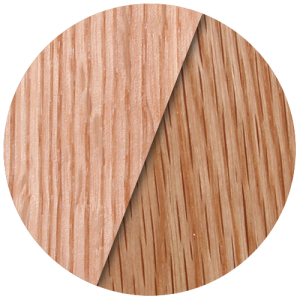The Differences Between Red Oak and White Oak Hardwood
The Differences Between Red Oak and White Oak Hardwood
Oak flooring is the most popular species of hardwood here in Hartford County CT and the northeast in general. Oak is a very practical wood, is readily available (grown and made in the US), very affordable and very easy to stain so you can find the color you prefer. But many consumers don’t realize that there are 2 species of oak – red oak and white oak flooring. Both red oak and white oak offer distinct characteristics, with red oak featuring a warmer hue and more pronounced grain patterns, while white oak has a more muted tone and is generally more durable due to its tighter grain. This choice can significantly impact the overall aesthetic of your space, making it essential to select the right type for your needs. Additionally, if you decide to refresh your flooring later, hardwood floor refinishing services can help restore the original beauty of your oak floors, allowing you to maintain their appeal for years to come.
If you are installing new hardwood flooring everywhere, either red oak hardwood or white oak hardwood will work, and your choice will probably be dependent on which look/color you prefer as well as the price (the prices of red oak/white oak fluctuate, so in general there is not usually a major price difference, but this can vary slightly at any given time frame or based on the brand/grade/width of hardwood you are choosing.
If you already have oak flooring, and are adding additional oak flooring, you will want to match what you already have…that way, you will have a consistent look and wood will absorb the stain colors the same way. I’ve seen it happen too often where a customer (or contractor) has mismatched the wood with red oak in some areas and white oak in others. This means that your wood will never completely match – the graining will be different and the stain color will be different.
What’s the difference between red oak flooring and white oak flooring?
-
Color
– red oak has a bit of a pinkish tint is a little bit lighter than white oak. White oak tends to be a bit browner, darker and more yellow. As they start out with different colors and have different densities, red oak and white oak absorb stains differently. When you stain them, the difference between the 2 species decreases, especially the darker you go. With lighter stains, the red oak tends to have a bit of red undertone in the color.
-
Graining
– red oak tends to have stronger graining than white oak hardwood. White oak has a bit of a smoother look. Some people prefer the strong graining of red oak – both because they like the look and because the strong graining helps hide the scratches and dents; other prefer the slightly smoother grain of white oak and feel it’s a less busy look.
-
Hardness
– white oak flooring is a bit harder than red oak. On the Janka hardness scale, White oak is 1360 and red oak is 1290. But, as I mentioned above, even though red oak is a bit less hard, it tends to show the dents a bit less.
-
Compatibility with stair treads and accessories
– Red oak is more common in stair treads, saddles, banisters and other transitions. If you have oak stair treads already in your home, chances are, they are red oak, so you may be better served matching that. If you need to get new stair treads or other transitions, they are usually more readily available (and hence lower priced) in red oak.
-
White oak is more resistant to water than red oak.
Because white oak is a closed grain wood, it more impervious to water. Many of pores are plugged with tyloses making it more resistant to decay and rot. This is why it’s used more often in boat building. And, it’s also why it’s better to use white oak on front door jambs as well as other areas that may be more exposed to water and nature’s elements.
-
Price
– In general, there is not a major price difference between red oak and white flooring. Because unfinished hardwood is a commodity item, the price tends to fluctuate weekly. At times, red oak costs more; at other times, white oak costs more. the price will often vary based on width and grade. And, very often, I have the red oak in 1 size as more expensive and white oak of another size is more expensive, and it literally changes all the time.
That being said when looking at wider planks, especially 5″ and wider, white oak tends to be a bit more expensive. That is most like due to most red oak trees grow taller and have a wider diameter, as well as the fact that red oak is more abundant vs. white oak (at least in the US).
Please note that matching hardwood is a bit more complex than simply matching red oak vs. white oak. Also, there are differences in grades of hardwood flooring (e.g. select grade vs No 1 vs. No 2 vs quarter-sawn). If you are unsure what type of flooring you have, it’s best to call in us; your hardwood flooring expert.
Also, bear in mind that you can stain both red oak and white oak flooring to be darker. They both accept the stain colors a bit different, so it’s important to test them on your floors. White oak tends to come out a bit darker and browner while red oak tends to come out a bit lighter and has a bit of red undertones. You tend to notice the red undertones more in red oak with lighter stains; the darker you go, the more it drowns out the pink/red. Below are all examples of oak with stains.
For those looking to go gray, white oak works much better. The color and the graining just work better with this cool tone. And, with red oak, there is an underlying pinkish tint, so you need to go darker with the gray to drown it out.
Conclusion: Both red and white oak are great options. Some people prefer the look of red oak while others prefer white oak. If you are starting from scratch, pick your favorite. If you are adding to existing hardwood, it’s generally best to match.





